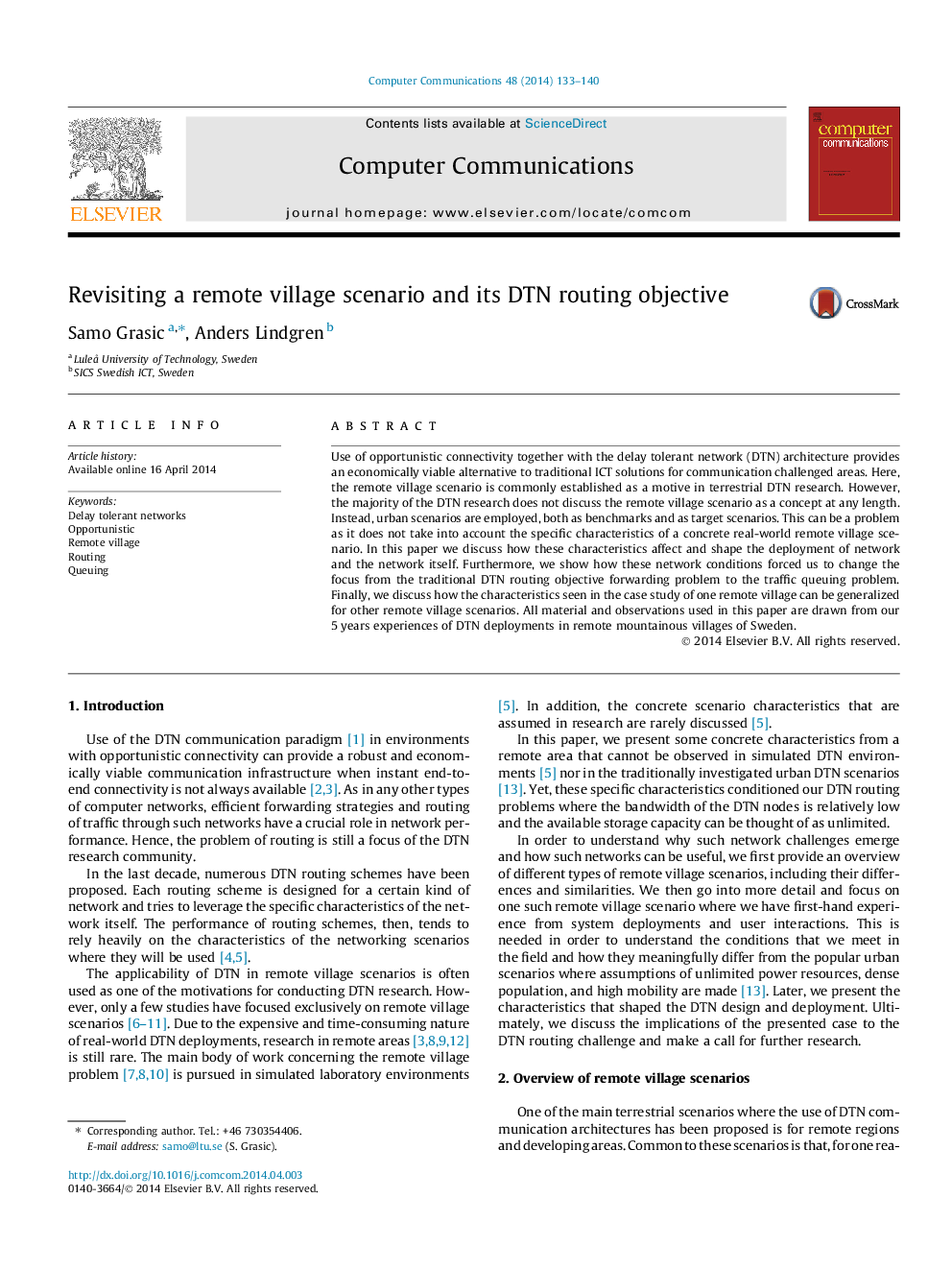| Article ID | Journal | Published Year | Pages | File Type |
|---|---|---|---|---|
| 445938 | Computer Communications | 2014 | 8 Pages |
Use of opportunistic connectivity together with the delay tolerant network (DTN) architecture provides an economically viable alternative to traditional ICT solutions for communication challenged areas. Here, the remote village scenario is commonly established as a motive in terrestrial DTN research. However, the majority of the DTN research does not discuss the remote village scenario as a concept at any length. Instead, urban scenarios are employed, both as benchmarks and as target scenarios. This can be a problem as it does not take into account the specific characteristics of a concrete real-world remote village scenario. In this paper we discuss how these characteristics affect and shape the deployment of network and the network itself. Furthermore, we show how these network conditions forced us to change the focus from the traditional DTN routing objective forwarding problem to the traffic queuing problem. Finally, we discuss how the characteristics seen in the case study of one remote village can be generalized for other remote village scenarios. All material and observations used in this paper are drawn from our 5 years experiences of DTN deployments in remote mountainous villages of Sweden.
